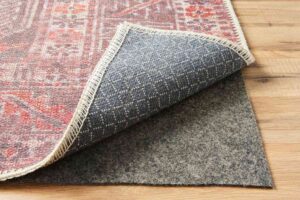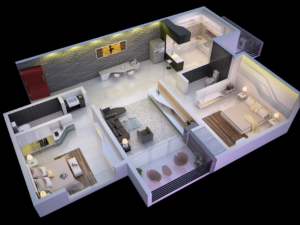
Unveiling Your Home: A Guide to Finding Blueprints
Introduction
Discovering the blueprints of your house can unlock a wealth of information about its design, layout, and structural elements. Whether you’re planning renovations, curious about the original design, or seeking insights into your home’s history, locating the blueprints is a valuable endeavor. In this comprehensive guide, we’ll walk you through the steps to find blueprints for your house, along with common questions and essential tips.
I. Contact the Builder or Architect
1. Reach Out to the Builder:
Start by contacting the original builder of your home. They may have retained copies of the blueprints, especially if the construction is relatively recent.
2. Architect’s Office:
If your house was designed by an architect, reach out to their office. Architects often keep records, and they may provide you with a copy of the blueprints.
II. Local Government Records
1. Building Department:
Visit or contact your local building department. They typically keep records of construction permits, including blueprints. You may need to provide information about your property to access these records.
2. Property Records Office:
Check with your local property records office. They may have historical records, including blueprints, that can offer insights into the original design and any subsequent modifications.
III. Online Resources
1. County or City Website:
Some local governments have started digitizing their records. Check your county or city website to see if they offer online access to building permits, plans, or blueprints.
2. Online Blueprint Services:
Explore online platforms that specialize in providing blueprints and architectural plans. Some services may have a database of house plans, including historical records.
IV. Home Improvement Stores
1. Consult Local Home Improvement Stores:
Visit local home improvement stores and inquire about your house’s blueprints. Some stores maintain contacts with builders and architects and may assist you in your search.
2. Blueprint Reproduction Services:
Some home improvement stores or specialized services offer blueprint reproduction. If you have some information about your house, they may be able to reproduce the blueprints for you.
V. Social Connections and Neighborhood
1. Connect with Neighbors:
Reach out to long-time neighbors who may have information about your house’s history. They might have insights or even possess copies of the blueprints.
2. Local Historical Society:
Check with your local historical society. They might have archives or records related to homes in the area, providing historical blueprints or information about your house.
Frequently Asked Questions:
1. Why are blueprints important for homeowners?
Blueprints offer crucial insights into a home’s design, structural details, and potential modifications. They are valuable for renovations, understanding the property’s history, and ensuring compliance with local regulations.
2. Can I get blueprints if my house is old?
Yes, many older homes have blueprints on record with local building departments or property records offices. It may require some research, but access to historical blueprints is often possible.
3. What information is typically found in house blueprints?
House blueprints include details such as room dimensions, structural elements, plumbing and electrical layouts, door and window placements, and sometimes even landscaping plans.
4. How much does it cost to obtain house blueprints?
Costs vary. Some sources, like local government offices, may provide them for free or at a nominal fee. Online services or blueprint reproduction services may charge more, depending on the complexity and availability.
5. Are there privacy concerns in obtaining house blueprints?
Generally, blueprints are considered public records, and access is permitted. However, privacy laws may vary, so it’s advisable to check local regulations and ensure compliance.
6. Can I find blueprints for any type of house?
In most cases, yes. Blueprints are typically available for residential properties. However, the ease of access may depend on factors such as the age of the house, local record-keeping practices, and regulations.
7. What if the original builder or architect is no longer in business?
In such cases, explore alternative sources like local government records, property records offices, or online platforms specializing in architectural plans.
8. Can I use blueprints for home renovations?
Absolutely. Blueprints are invaluable for home renovations. They provide accurate details about the existing structure, aiding in planning and executing modifications.
9. What if my house underwent renovations, and I need updated blueprints?
Contact the local building department to check if updated blueprints were filed for the renovations. Architects or contractors involved in the renovation may also have this information.
10. Are there online forums or communities where homeowners share blueprint-finding experiences?
Yes, explore online forums, social media groups, or community platforms where homeowners share experiences and tips on finding blueprints. Local forums may be particularly helpful.
Tips for Blueprint Search
1. Be Persistent:
Finding blueprints may take time and persistence. Explore multiple sources and follow up with different offices or individuals.
2. Prepare Property Information:
Have essential property information ready, such as the address, parcel number, or details about the original builder or architect. This information can streamline your search.
3. Check Multiple Sources:
Don’t rely on a single source. Check with local government offices, property records, and online platforms to maximize your chances of finding the blueprints.
4. Seek Professional Help:
If your efforts yield limited results, consider hiring a professional researcher or a local architect who may have experience navigating the process.
Conclusion: Unveiling the Blueprint Tapestry
Locating the blueprints of your house is like unraveling a tapestry of its history and design. From the original layout to any subsequent modifications, blueprints provide a roadmap for understanding and enhancing your home. By exploring diverse avenues, reaching out to local resources, and leveraging online platforms, you embark on a journey to unveil the intricate details of your dwelling. Armed with this knowledge, you can make informed decisions, whether you’re planning renovations, satisfying your curiosity, or preserving the architectural legacy of your home.


